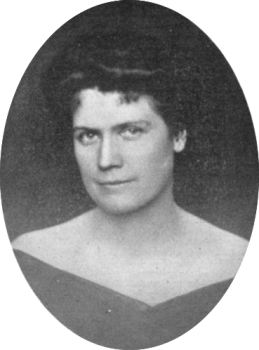One hundred years ago this week, Grace Kingsley reported an unusually high number of accidents and injuries. The list included:
- J. Warren Kerrigan and the cast and crew of The Measure of a Man were in a boat crash when they were returning from filming scenes in Eureka. At one o’clock in the morning a lumber schooner struck their passenger boat and everyone was thrown from their beds. Luckily, both ships were able to get to San Francisco.
- Val Paul was rehearsing a scene on the shores of Catalina Island in which he saved a boy from a shark attack when a real shark attacked. He managed to grab the boy and escape by climbing onto a rock.
- Harry Carey, while “performing a perilous feat” in The Underling was thrown against a railroad track and his shoulder was severely injured.
- Herbert Rawlinson was hurt while filming a fight. He fell and tore the ligaments in his knee. However, they were working at the LA County Hospital at the time, so he saw a doctor right away.
- Dorothy Phillips was injured when she fell into a bear trap while filming on location in Bear Valley.
Working in film in 1916 was dangerous! Happily, everybody recovered from their trauma and injuries. J. Warren Kerrigan continued to be a leading man until he quit acting in 1924; The Measure of a Man was released in November and Moving Picture World thought it was wholesome, if a bit padded. Val Paul kept acting until the early 20’s, then he became a director, producer, and production manager. Harry Carey became a big star of Westerns, then a character actor and was nominated for an Oscar in 1940 for his role in Mr. Smith Goes to Washington. The Underling was re-named The Conspiracy and Motion Picture News thought it was “an entirely satisfactory melodrama.” Herbert Rawlinson also had a long career, though he was less successful, moving from being a leading man in the silent era to doing bit parts in talkies and television. Dorothy Phillips’ career also prospered in the 20’s, then dwindled to occasional bit parts.

Finally, one accident might have gotten put to good use:
Last Monday Director [Hal] Roach’s car was hit and demolished by a truck while on its way to location, loaded with players. Bebe Daniels and Harold Lloyd were both sent to the hospital while Fred Jefferson and James Crosby suffered minor injuries. The car was completely wreaked, but the cameraman was on the job. Leaping from under the wreckage, he saw that the camera was uninjured, and at once set it up, calling meanwhile to the players the familiar phrase “Hold it!” He got a picture of the wreak, and it’s going to be used in a comedy. Well, some cameramen do have a sense of humor!

Crosby, the quick-thinking cameraman, had gotten his start in film working at the Selig-Polyscope lab in 1904. When the film industry contracted in 1918, he went back to lab management and in 1933 he invented an automatic film developer.
I can’t find out if they really did use the footage in a film because trade papers rarely reviewed shorts and only 14 of the 67 Lonesome Luke films survived, according to Annette D’Agostino Lloyd. But it seems plausible that it was in Luke the Chauffeur, released on October 29, 1916.

Kingsley particularly enjoyed The Weakness of Strength this week, saying it was
“the strongest and sincerest photodrama the Symphony [Theater] has shown in many a day…in vain one looks for the impossibly fortuitous circumstance, the villain who villains for the pure joy of villaining, the too-perfect hero…even the happy ending, for which one does not look early in the picture, is so adroitly evolved as to appear quite the natural outcome of events.”
The story involves a clerk who, desperate for money to care for his sick grandmother, embezzles money, but his boss ultimately forgives him (AFI Catalog). It’s a lost film. Now the only remarkable thing about the film is how unremarkable it was. All of the cast and crew had decent careers, but nobody was particularly famous. It’s the sort of movie that kept the entertainment industry running.

Kingsley reported one patently absurd item unquestioningly: Mack Sennett ordered “the cutie Keystone bathing girls to return to the old-style bathing suits.” Of course, no such thing happened, and I have no idea why somebody thought that would be a useful bit of publicity.















